Vacation Island: What It Really Means to Record and Mix in Williamsburg
WILLIAMSBURG, BROOKLYN: It’s fun to imagine what Matt Boynton, founder of the thriving Williamsburg studio Vacation Island, might do if someone presented him with a marketing plan.
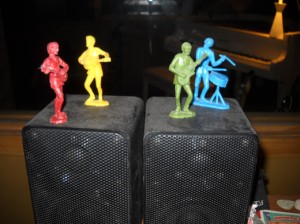
Start each session the Vacation Island way: with colorful plastic figurines of George, Paul, George and Ringo! (all photos by David Weiss)
He might make it into a little hat. If it had a lot of pages, he may be able to construct some type of makeshift shelter. With the addition of some glue, perhaps he could sculpt a papier-mâché statue of the Beatles.
But that would be about it, because apparently all Boynton needs to do in order to bring business to Vacation Island is keep showing up. Since he started the studio in 2007, word of mouth from his client list has seen the creatively-freeing space consistently booked.
As evidence, just ask Bat for Lashes, Beirut, Black Dice, Kurt Vile, MGMT, Suckers, Vietnam, and many more from across the indie rock spectrum. There’s a reason they return to record and mix with Boynton at Vacation Island – and it ain’t because he’s slick.
Instead, Boynton has a pretty simple explanation for his consistently expanding client base. “People like to work with me,” he says. “They call me up. They keep coming back. I don’t feel competitive with other studios – I just want the place to be booked, and I just want to be working on things that I like. That’s what I do.”
Student of SoHo
Although there seems to be a studio on every other block in Williamsburg these days, not all of them sport the pedigree of Vacation Island.
Boynton built up his engineering chops at the Magic Shop in SoHo, working for years under the highly respectable tutelage of Steve Rosenthal. Hired in 2002 at the revered downtown facility by accident (it’s a funny story), Boynton gradually went from being an intern to an indispensable member of Rosenthal’s crew. By the time he rose to chief engineer there, Boynton had become thoroughly immersed in the science behind great audio.
After four productive years, Boynton felt ready to start working freelance, and struck out on his own in 2006 with a studio that also happened to be his apartment…that also happened to be an ex-storefront in Williamsburg — but he quickly soured on rolling out of bed straight into the sweetspot. In search of some headroom, Boynton eventually used CraigsList to find the 1000 sq. ft. space that would become Vacation Island.
While Boynton didn’t have much of a marketing plan in his head, what he did have was a sound strategy behind this calculated risk. “I thought, ‘The way the music business is going – which is not well – I have to be cheaper,’” he explains. “I figured I’d build a studio and be less expensive for bands. I record my friends, but it just so happens my friends are in MGMT and Gang Gang Dance.
“I guess it’s like any other local scene, but it’s Williamsburg – it’s NYC,” he continues. “It’s larger than any local scene going on in a small town in Oklahoma. Local bands here are famous.”
Designing a Brooklyn Studio
Five years after occupying the space, Boynton has built it and thoroughly broken it in. The Vacation Island vibe starts out in the large control room outfitted with a Neotek Series 1E 24-channel console. Manning the faders, you look through large windows into the two live spaces that have been set up railroad-style, designed specifically to accommodate full rock bands that want to play together live, but in spacious isolation.
Directly adjacent to the control room is the Island’s “Dead Room”, a 12-foot x 11-foot x 9-foot-6-inches space that comfortably holds a white Schumman 5-foot baby grand piano, with plenty of space to spare. Next over is the significantly larger “Live Room,” which sports 16-foot x 19-foot x 12-foot dimensions and enables highly musical sounds for drums and live instruments. It also accommodates a Farfisa Bravo, Wurlitzer Organ, 1928 Crown Upright piano, red 1970’s Yamaha Organ, and many more creative tools.
“My studio is somewhat rare in that a whole band can perform live here, and still be isolated really well,” says Boynton. “With the Dead Room, I can do acoustic instruments and drums at the same time – usually those have to be done separately. The railroad-style layout was the best way, in my opinion, to occupy the space. I like the musicians to be able to see each other, and overall it just seems practical and compact – I’m getting a lot out of a little bit of space.”
An avid reader of informed audio resources, Boynton learned about the “Golden Ratios” of recording as detailed in the books “Building a Sound Studio on a Budget” and “The Master Handbook of Acoustics” by F. Alton Everest and studiously applied them to the Live Room’s design.
“In that formula,” he explains, “you take your most limited dimension, which is generally ceiling height, and then multiply it by certain numbers (1 : 1.28 : 1.54) to come up with the width and the length. Sticking with that allows for more even distribution of lower room modes, which reduces the frequencies that can make it sound muddy. If you start from this Golden Ratio, it’s much easier to treat a room. The idea was to have a really dead room to do vocals, drums, anything…and have it be just the opposite of the live room.”
Personalized Workflow in the Control Room
After letting it all hang out in the Live Room, Dead Room, the Iso booth, and/or two amp closets, bands are happy to join Boynton in the wide open control room, which was also designed using the aforementioned Golden Ratios.
“I laid out the room to work for me, and the way I track and mix,” he says. “I decided to get a Neotek board because they’re really simple in the way that they’re built. I thought, ‘I can’t afford a $75,000 Neve console, so I may as well get something that’s clean and almost surgical so I can shape it and color the sound outside of the console. that’s clean and almost surgical so I can shape it and color the sound outside of the console. Although it turns out I really love the sound of the series 1E, especially when it’s pushed and the peak LED’s light up.”
A fan of the sound of vintage transformers breaking up musically, Boynton modified the Neotek with UTC LS-141 transformers to make a balanced master output for the board. “They weigh four pounds each,” notes Boynton of the transformers. “It’s a ton of iron to send the signal through. You push these and get a little bit of distortion in a nice way.”
Listening primarily via ProAc Studio 100 or EV Sentry 100a monitors, Boynton uses the Neotek board in combination with a Euphonix MC Mix controller to mix in Pro ToolsHD2. With a carefully constructed workflow, Boynton feels that he’s built a seamless bridge between his analog and digital tools.
“When mixing I basically use Pro Tools I/O sends and hardware inserts to get in and out of the analog world instead of doing everything on the board in a traditional sense,” he says. “Then I sum all the tracks in Pro Tools to the last 16 channels on the console. When the mix is done I print all the outboard processing back into Pro Tools and write down the bus compression and reverb settings so I can instantly recall a mix in the future. When I track, I do all the compressing and EQ along the way, which makes it easy for me when I mix.”
That carefully-thought-out tracking signal path is part of an attitude that allows the music made at Vacation Island to ring out with the immediacy of the moment, stemming from Boynton’s ability to commit to a special sound from the start.
“That’s the way to do it,” he confirms. “I think it sounds better (to apply compression and EQ while tracking), and I think it’s better for the musicians because they’re hearing what they’re doing in pretty much the way it’s going to be. When I make decisions early on, I don’t have to go back and forth later. I take my cue from older records too, when they had to bounce tracks – they’d eventually put the drums, bass and acoustic guitar together on one track, so they had to get a good mix of it. Limiting yourself in that way is a good method.”
Behind the console are three racks of mic pres, effects and dynamics that allow Boynton to complete the picture. Your eye might be first drawn to the Helios Type 69 pres, LA3A’s or Tube-Tech CL 1B, but Boynton depends most heavily on a sleeper nestled in Rack #3: a Sony MU-R201 Stereo Reverb unit.
“It’s just an amazing old digital reverb,” he notes. “I don’t know exactly what it is that makes it sound different than something that costs 20 times as much, but it fits into a mix really nicely. You can put every track through it, and its warm and lush sounding in the way that Lexicon gear isn’t. It is a true stereo reverb has two separate processors for the left and right, which allows you to pan a track within the stereo image of the reverb.”
Boynton is unabashedly old skool in his choice of desert-island dynamics: his Neve 33609. “I could have nothing else but 33609’s and I’d be totally happy. They’re magic sounding. I don’t know what it is – it’s just a well-designed piece.”
Recording and Mixing “Candy Salad” for Suckers
For proof of how well this all comes together, listen to Candy Salad, the new album from the Brooklyn-based trio Suckers that was just released by NYC tastemaker label French Kiss. At turns anthemic, adventurous, sweeping, simple and gorgeous, the 11-song collection was enabled by the fast-moving freedom that pervades Vacation Island.
“I’ve known (singer) Quinn Walker for a while, and we’ve been threatening to make a record together,” Boynton says. “This is a good environment for them, because it’s a good environment for everyone: It’s comfortable, I’m really flexible, and I work fast. He’s got a lot of ideas, so we just try them all and weed out what doesn’t work right away.”
To Boynton, the drum sounds on Salad are a solid show of his approach to recording. “I always work hard on drums to get specific sounds for each record,” states Boynton. “I was listening to Plastic Ono Band, Joe Walsh, Brian Eno for inspiration – we wanted to get a really warm, but tight and very present and spirited kind of a ‘70’s drum sound. The Fleetwood Mac song ‘Dreams’ was one thing we talked about a lot. Then we tailored each drum sound to each song.
“We put delay on these drums, which I liked. It’s a spatializing effect that’s an alternative to reverb – it gives it more depth, especially with dry drums. I like to put Emperor heads on, because they’re thicker and add more harmonics. That way it’s not as much of a tone, and more of a thud. Then I’ll put on towels, tape…whatever it takes. As far as miking them – just pick the right mic and put it in the right place!”
For Quinn’s emotionally expressive vocals, Boynton turned to another favorite in his producer’s rack in the Neve 33314 compressor/limiter. “That’s the console version of the 33609,” he says. “I ran the vocals through that when we were mixing, compressing something like 12 dB, because I’m not afraid of what might look like overdoing it. We tried to stay away from reverb, because Quinn’s got the kind of voice where I’m afraid someone would say, ‘Let’s put a ton of reverb on it to make it sound big and lush.’ So instead we put a lot of delays on it to keep it dry in the Plastic Ono Band vein.
“On the song ‘Leave the Light On’ we ran the vocal through the Echoplex, then fucked with the delay time so it would jump and warble. After that, we lined it up with the music for this dreamy vibe. Then when the drums kick in, that’s when it shifts to a more straight-up vocal sound.”
That little bit of experimentation provides a big window into why recording at Vacation Island usually turns out well for artists. “I like to do things that are interesting,” Boynton says simply. “I like to listen to the records I make and say, ‘I like that idea. That was a cool sound.’
“This is why people come to work with me: They want me to do what I do to their records. I’m never trying to enforce my aesthetic on somebody – I try to adapt it to the band I’m working with. It just so happens I have a specific thing that I do, and there’s such a blurred line between producer and engineer at this point. I’m doing both jobs, and I’m not afraid to point something out that may not be working, or suggest new ideas and figure out parts.”
Setting the Williamsburg Studio Trajectory
Vacation Island shows how far audio expertise, aesthetic vision, patience, and a fierce work ethic can take the 21st Century wave of studios sprouting throughout Brooklyn: all the way. With a singular sense of art and science, plus a genuine connection to the myriad bands populating the surrounding blocks, tenacious sonic proprietors will get to keep recording.
But don’t try and talk all that big-picture stuff to Matt Boynton. For him, his focus is set squarely on the sound coming out of those two speakers in front of him, his family, and nothing else. “I don’t know what’s going on outside, and I don’t know how people work at other studios,” he says. “I’m here. I go home, hang out at the beach with my kid, and then I come back the next day. You know?”
— David Weiss
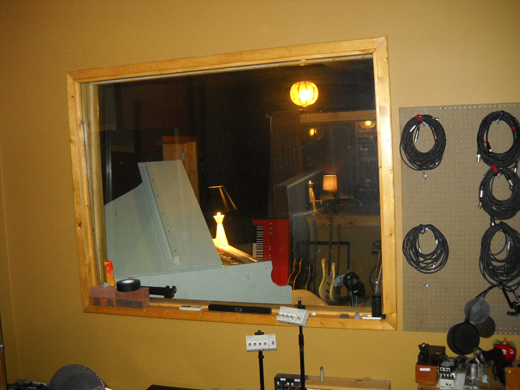
A view of the Island "railroad": looking from the Live Room into the Dead Room. The lamp in the middle of the picture is on the Neotek in the control room.
Please note: When you buy products through links on this page, we may earn an affiliate commission.







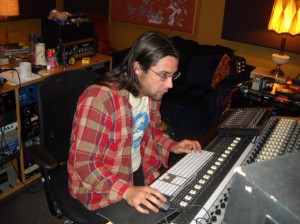
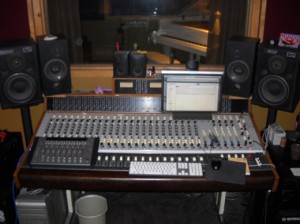
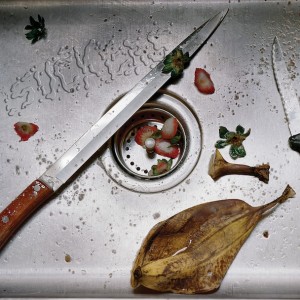
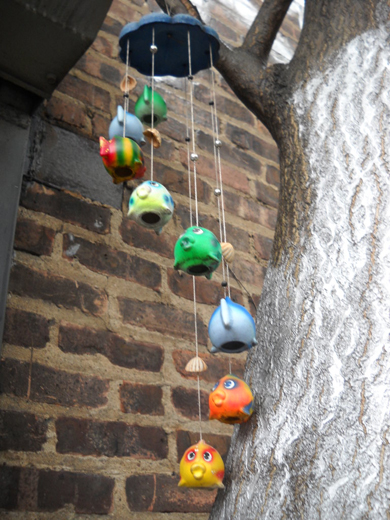
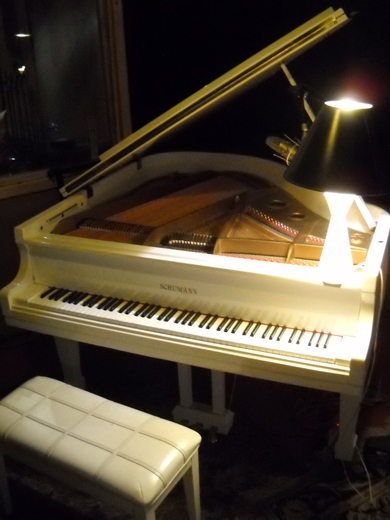
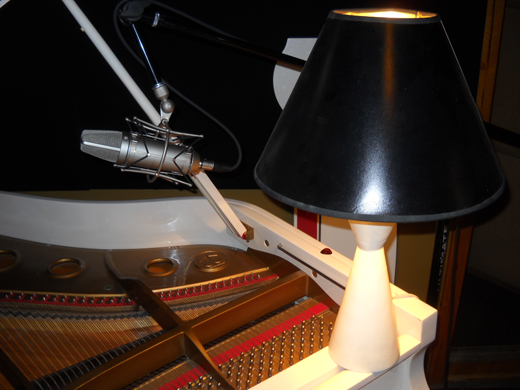
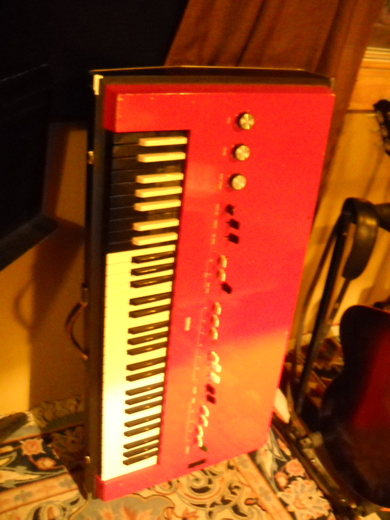
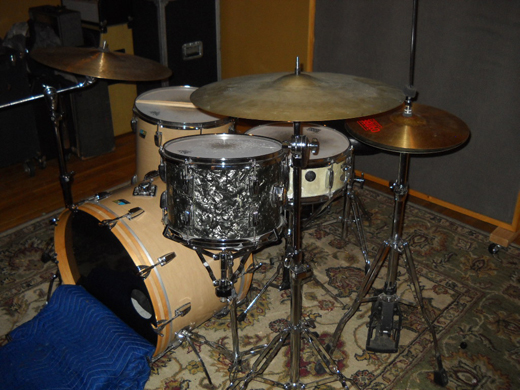
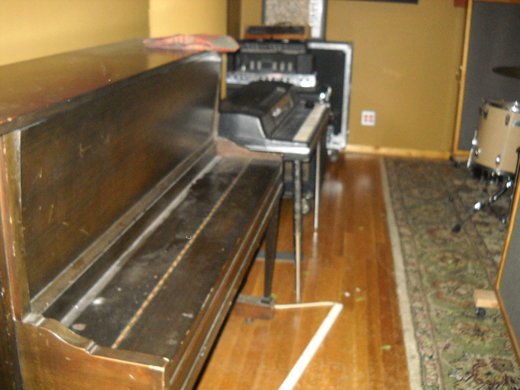
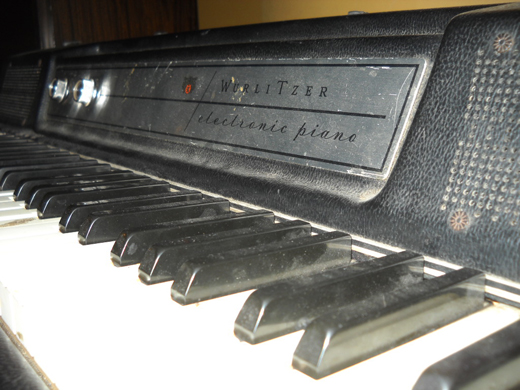
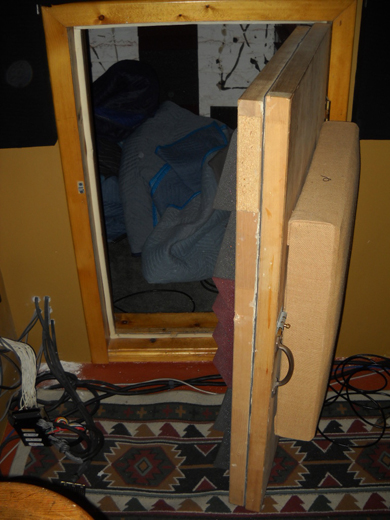
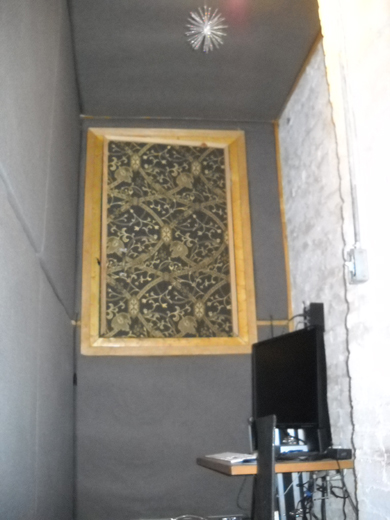
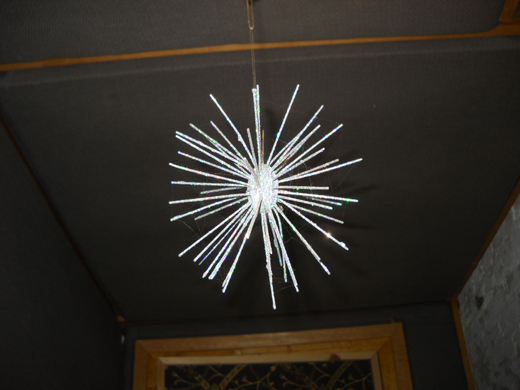
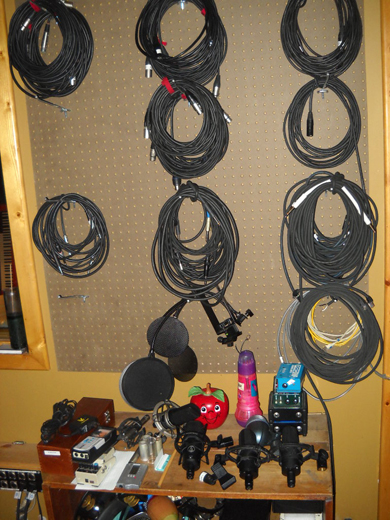
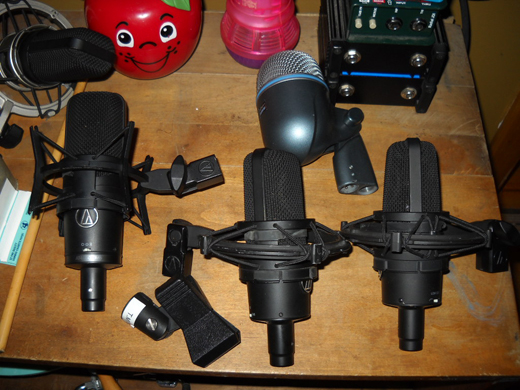
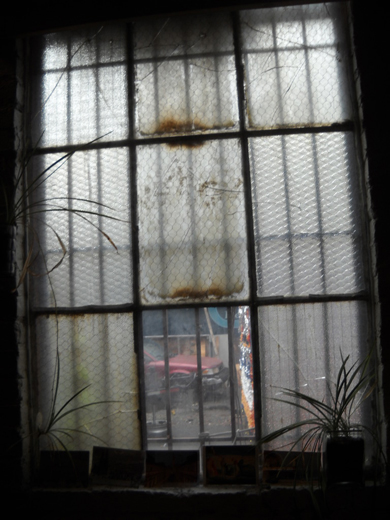
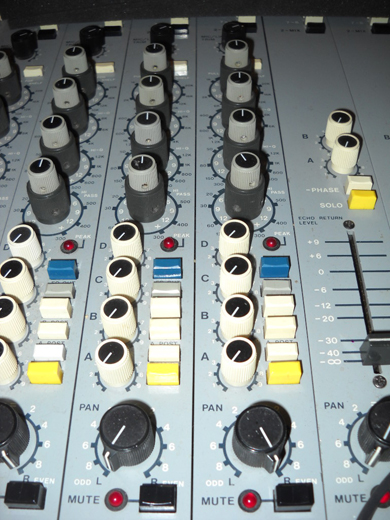
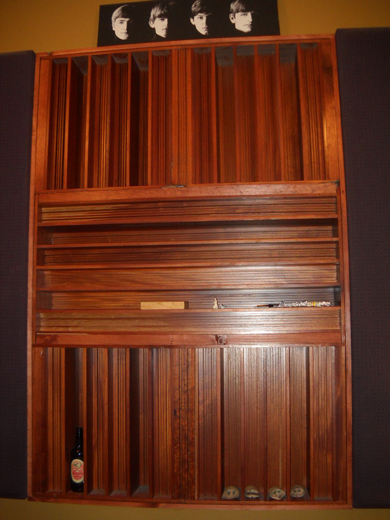
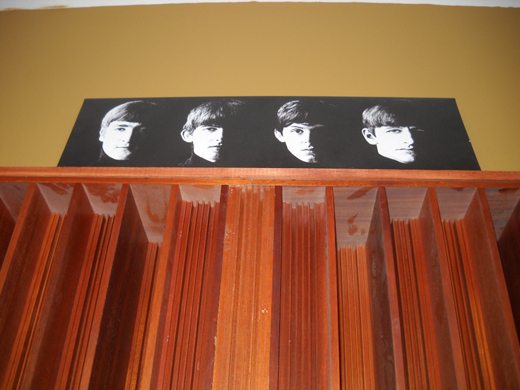
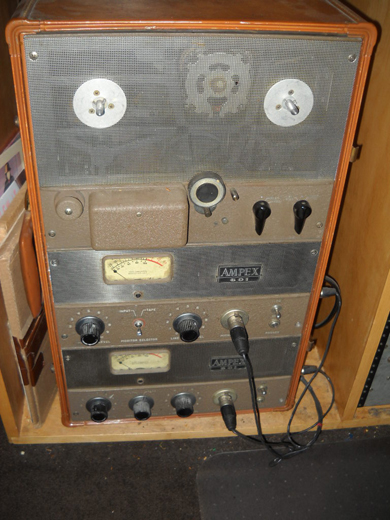
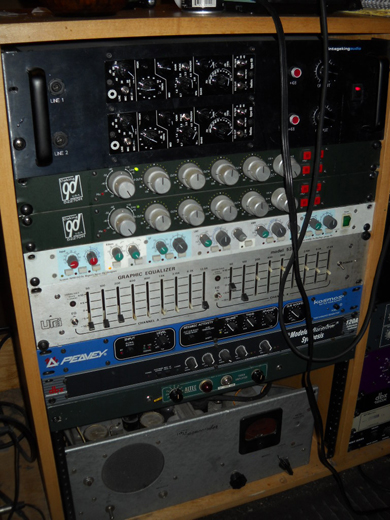
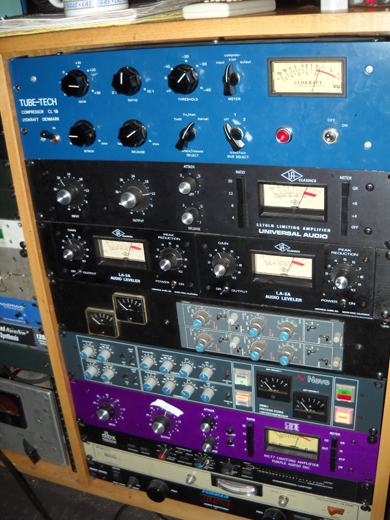
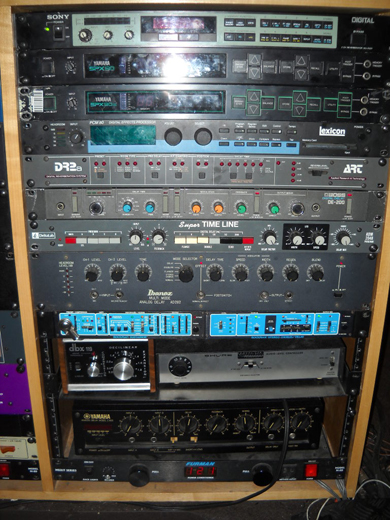
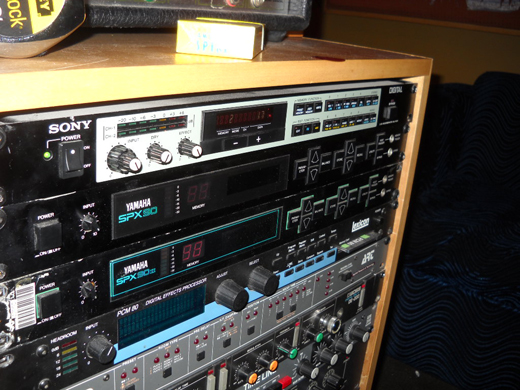
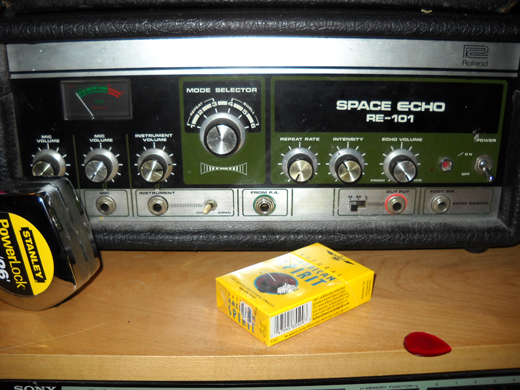
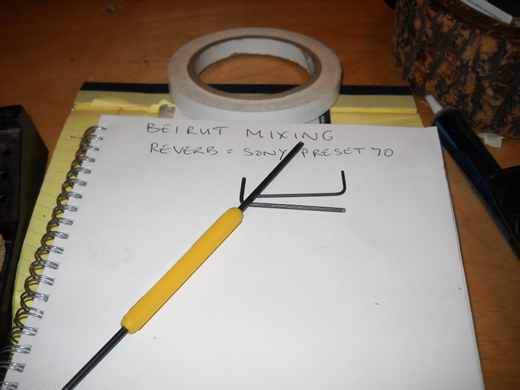
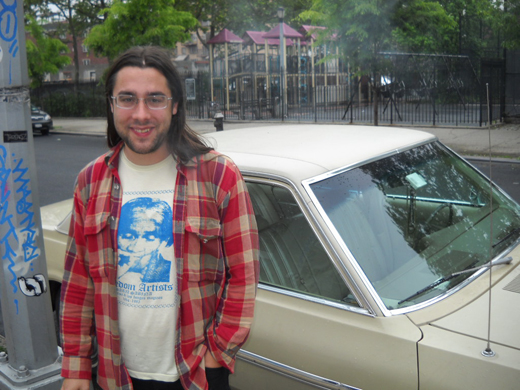
Kathy Boynton
May 22, 2012 at 12:36 pm (13 years ago)Awesome article Matt. Very proud Mom. Kathy
Crecia
May 22, 2012 at 4:01 pm (13 years ago)yay matt!!! great article, miss you guys so much xxx glad things are going well
Janet
May 23, 2012 at 12:33 pm (13 years ago)Great article Matthew!! Very proud Mom also.
Ike
May 24, 2012 at 6:35 pm (13 years ago)Hey Matt,
Great write-up. Love the “Happy Apple” in the mic shot!
Anonymous
May 24, 2012 at 7:47 pm (13 years ago)Great Article – Love the insight into the design nd sound artitechture behind their work.
Cristag
May 25, 2012 at 8:48 pm (13 years ago)Great article. Like all the tech specs and the photos.
Chris Chernobieff
April 21, 2014 at 7:34 pm (11 years ago)Well done article thanks for the tips.
Antique
Piano Emporium